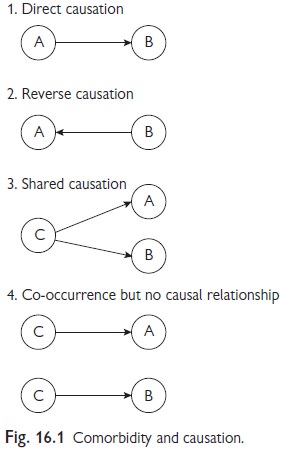Chapter: Paediatrics: Child and family psychiatry
Paediatrics: Comorbidity and causation
Comorbidity and causation
The aetiology of most common
mental health problems is poorly under-stood. In most cases there appears to be
interplay between genes and environment with polygenic pathways, multiple
potential environmental risk factors and complex gene x environment
interactions and associa-tions (Fig. 16.1). As a consequence the simple
relationship depicted by example 1 is rare. Example 1 does, however, remind us
that one condition may develop into another, e.g. the progression of
oppositional defiant disorder to conduct disorder. Reverse causality is also
possible e.g. head injury caused by impulsive risk taking behaviours s to ADHD. It is also the case that
the presenting condition, for instance depression, may be s to earlier struggles with an
eating disorder (example 2). The co-occurrence of disorders is common in child
and adolescent mental health. Disorders A and B in examples 3 and 4 above are
comorbid. An example of 3 is sexual abuse acting as a non-specific risk factor
for later drug and alcohol use and deliberate self-harm. In example 4, the two
conditions may co-occur, but are aetiologically unrelated. Other potential
relationships between A and B are possible and indeed most cases will be much
more complex than depicted here.

Related Topics